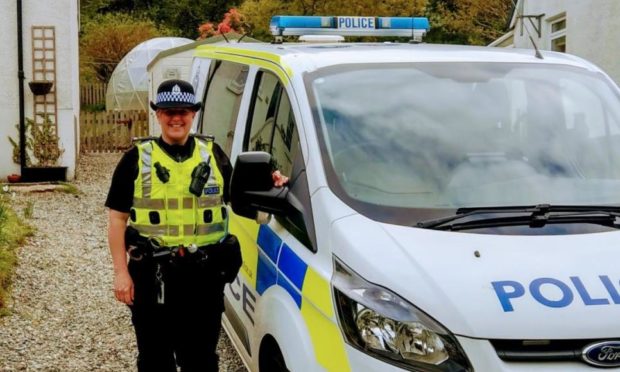Fraudsters have been taking advantage of elderly people facing social isolation brought about by lockdown.
This has prompted a support network being formed to help protect vulnerable residents in the Oban area.
The Argyll policewoman behind the scheme says that while there has been a decrease in some areas of crime with less people on the streets – other areas have soared.
In Argyll and Bute the number of frauds being reported to police has nearly doubled when compared to the same period last year.
There were 131 fraud crimes in Argyll and Bute between April 1 and December 31 2020 compared with 66 in the same period during 2019.
PC Laura Evans has created the Cared for at Home Network to alert carers, befrienders, or anyone with regular contact with elderly or vulnerable people, to these types of scams.
PC Evans said: “We know that our elderly and vulnerable communities are more vulnerable to being targeted by telephone scams and bogus callers. The Cared for at Home Network allows us to raise awareness throughout vulnerable groups including the elderly who are often not on social media. It is hoped that through sharing information and raising awareness that we can help protect those at greatest risk from this type of crime.”
She said that younger people are more likely to report being a victim of fraud to police, whereas older people don’t report it due to embarrassment, pride and fear of having their independence taken from them.
Research by Age Concern UK has shown that an elderly victim of bogus crime is more likely to die or enter full time residential care within two years of being a victim.
Over the past few years, telephone frauds (someone pretending to be from Amazon, BT, a bank or other company) were decreasing as more and more people were going online.
However since lockdown police have seen a startling rise in telephone frauds – mainly due to scammers knowing that people are at home to answer the phone. They know many vulnerable people are more socially isolated and less likely to have people at their house to intervene in these calls.
Now in the Oban, Lorn and Isles area, the Cared for at Home Network has been formed in a partnership between North Argyll Carers Centre, Crossroads North Argyll, the Dochas Carers Centre, The Good Care Group, ALI Energy, Carr Gomm, Citizens Advice Bureau and Argyll Care and Repair.
Peter Minshall, centre manager of the Dochas Carers Centre said: “The Dochas Carer Centre along with many other organisations in Argyll who support unpaid carers, welcomes the new Cared for at Home Network being introduced by police and views this smart initiative as a practical way we can all work together to ensure a safer crime free community.”
The Cared for at Home Network is hosted by Neighbourhood Watch Scotland, a communication system which allows police to send out alerts on issues of crime and safety. Alerts are sent out to people within the Cared for at Home network by email or text depending on urgency of message and preference.
To find out more or to become involved, contact PC Laura Evans, Local Authority Liaison Officer for Argyll and Bute at laura.evans@scotland.pnn.police.uk.










